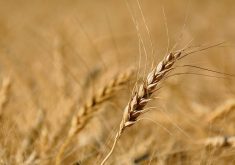Prairie pest specialists say that so far this year, there is little sign of the insect which spreads aster yellows, the disease which did widespread damage to canola last year.
“South winds that carry aster leafhoppers from the southern U.S. arrived more than a month later in 2013 than in 2012. This is a factor in lower numbers this year,” said this week’s Canola Watch report from the Canola Council of Canada.
“Late infestations are still possible, but the indication so far is that aster yellows will not be a major issue in 2013,” the report said.
Read Also

Senft to step down as CEO of Seeds Canada
Barry Senft, the founding CEO of the five-year-old Seeds Canada organization is stepping down as of January 2026.
In his weekly report on the Call of the Land radio broadcast, Alberta Agriculture pest specialist Scott Meers said plants such as dandelions show evidence of the disease, which indicates the reservoir is there — but Prairie-wide, leafhopper numbers are low.
For producers who still have concerns, the Canola Watch report provides spraying guidelines and an address where producers can send suspect plants for testing for the disease.
Cereal leaf beetles
Meers said cereal leaf beetles are a problem in wheat and barley in southern Alberta this year. While there was hope that parasitoids would reduce the numbers, “It looks like it’s going to be need to be treated, at least in some areas.”
In central Alberta and into the Peace, there are reports of cutworms thinning crops, especially canola, Meers said.
Flea beetles
In this week’s Manitoba insect and disease update, provincial pest specialist John Gavloski says flea beetle populations have been at levels requiring insecticide applications in canola, with some fields requiring more than one application and some reseeding due to thin stands.
Gavloski said when canola gets to the three-to four-leaf stage in most instances it will be able to compensate for the feeding by flea beetles. Later-seeded fields will still need to be monitored for flea beetle feeding.
Gavloski also said there has been cutworm activity across the province, and the report includes photos for identification and control recommendations.
Diamondback moth trap counts are high in eastern Manitoba, but there have been no reports of larvae so far, the report said.
Other topics in this week’s Canola Watch report include scouting for cutworms, bees and canola, top-dressing fertilizer, aerial options for weed control and rescue treatment for a hailed crop. — AGCanada.com Network















